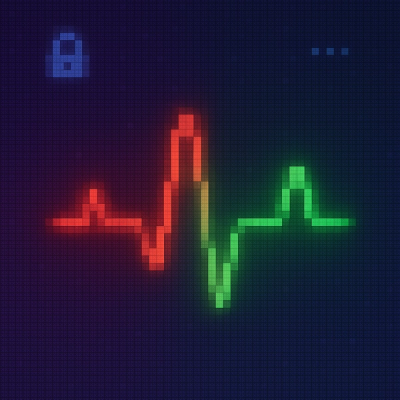
Product
Introducing Socket Firewall Enterprise: Flexible, Configurable Protection for Modern Package Ecosystems
Socket Firewall Enterprise is now available with flexible deployment, configurable policies, and expanded language support.
homebridge-itho-daalderop
Advanced tools
This Homebridge plugin exposes your Itho Daalderop mechanical fan unit to Apple HomeKit by using the WiFi Add-on module. So you can use the Home App to control your fan units and integrate into your Home Automations.

This verified Homebridge plugin exposes your Itho Daalderop mechanical fan unit to Apple HomeKit by using the WiFi Add-on module. So you can use the Home App to control your fan units and integrate into your Home Automations.
It is required to have installed and configured the WiFi Add-on module for your fan unit. More info about this module and for a complete list on what mechanical ventilation models are supported, please take a look at Arjan Hiemstra's GitHub repository or this forum thread on Tweakers.net (Dutch): Itho Daalderop - open source wifi control add-on module.
Using the MQTT API is optional, the plugin will use the HTTP API by default as it requires no additional software to be present in your network.
However, using MQTT is recommended as it does not require polling the API every few seconds, the plugin will just respond to data send to the MQTT broker.
If you want to use the MQTT API, you will need to install and configure a MQTT broker on your local network. I recommend using Mosquitto. The IP address of the MQTT broker is required to configure the plugin in Homebridge and in the WiFi Add-on module.
This plugin requires Node 14 or higher to be installed.
npm install -g homebridge-itho-daalderop
Or use the Homebridge UI to install the plugin:
Itho Daalderop and select the plugin Homebridge Itho Daalderop from @jvandenaardweg and click "Install"I recommend using the Homebridge UI to configure the plugin settings, as it gives guidance on what settings are required.
Homebridge Itho DaalderopBelow is an example config for the CVE-S Optima Inside with a built-in CO2 sensor and using the MQTT API.
{
"platform": "HomebridgeIthoDaalderop",
"name": "Itho Daalderop",
"api": {
"protocol": "mqtt",
"ip": "192.168.1.21",
"port": 1883
},
"device": {
"co2Sensor": true,
"nonCve": false
},
"verboseLogging": false
}
The plugin allows full manual speed control from 0% to 100% and everything in between. However, your fan needs to be able to support such speed commands. It is known that speed commands send to CVE unit's with a built-in CO2 sensor (like the CVE-S Optima Inside) are overruled by the internal speed control of the fan. This means you can't have fine grained control over your fan speed, and are limited to "low", "medium" and "high" speed settings.
This also applies to non-CVE devices like HRU-350, DemandFlow, QualityFlow or HRU Eco Fan. These devices do not support manual speed control, we can only use the "low", "medium" and "high" speed settings.
If you have such a device, please add the device configuration option to your config.json file. For a built-in CO2 sensor set the co2Sensor option to true. If you have a non-CVE device set the nonCve option to true. Or use the Homebridge UI to set these options. The plugin will then automatically map the speed in the Home App to the respective virtual remote commands, which will allow you to control the fan speed in 3 steps. The mapping is as follows:
| Home App speed | Virtual remote command | HomeKit Active state |
|---|---|---|
| 0% | low | inactive |
| 33% | low | active |
| 67% | medium/auto | active |
| 100% | high | active |
The Home App will automatically "snap" to the nearest speed setting, so you don't have to worry about setting the speed to 33% or 67% exactly.
You can also remove the CO2 sensor from the device itself. Just unplug it from the internal board. This will allow you to use the full manual speed control, but you don't receive any Carbon Dioxide reading from this sensor anymore in the Home App for the Air Quality Sensor. Make sure you have removed the device configuration option completely.
If you have any issues with the plugin, please enable the verboseLogging configuration option in the Homebridge plugin and check the Homebridge logs for any errors and debug messages.
Feel free to open an issue on GitHub if you have any questions or problems.
659dd4ae035ff7fff55d947e68adb5edfadbbd9eb82d63f5196f36771f9f034ce053c966ee1d79a66d13f3b9b91ac007406c5d996b1e6195a187fbe90d9f96adb75d7f50bb3b7924dc4d7b8474eaabe5f51f1f3e0a85e0ebc94eaf3902300FAQs
This Homebridge plugin exposes your Itho Daalderop mechanical fan unit to Apple HomeKit by using the WiFi Add-on module. So you can use the Home App to control your fan units and integrate into your Home Automations.
We found that homebridge-itho-daalderop demonstrated a not healthy version release cadence and project activity because the last version was released a year ago. It has 1 open source maintainer collaborating on the project.
Did you know?

Socket for GitHub automatically highlights issues in each pull request and monitors the health of all your open source dependencies. Discover the contents of your packages and block harmful activity before you install or update your dependencies.

Product
Socket Firewall Enterprise is now available with flexible deployment, configurable policies, and expanded language support.

Security News
Open source dashboard CNAPulse tracks CVE Numbering Authorities’ publishing activity, highlighting trends and transparency across the CVE ecosystem.

Product
Detect malware, unsafe data flows, and license issues in GitHub Actions with Socket’s new workflow scanning support.